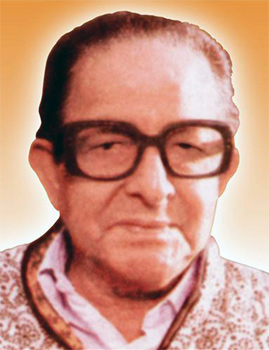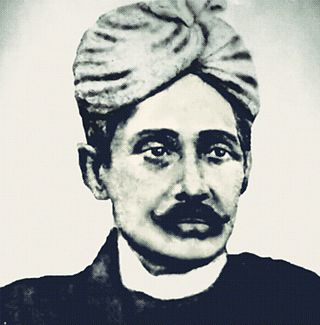
Assam is a state in northeastern India, south of the eastern Himalayas along the Brahmaputra and Barak River valleys. Assam covers an area of 78,438 km2 (30,285 sq mi). It is the second largest state in northeastern India by area and the largest in terms of population. The state is bordered by Bhutan and Arunachal Pradesh to the north; Nagaland and Manipur to the east; Meghalaya, Tripura, Mizoram and Bangladesh to the south; and West Bengal to the west via the Siliguri Corridor, a 22-kilometre-wide (14 mi) strip of land that connects the state to the rest of India. Assamese and Boro are the official languages of Assam. Meitei (Manipuri) is the official language of Hojai district and the entirety of the Barak Valley districts, while Bengali is an official language in the three districts of Barak Valley.

Gymkhana is a British Raj term which originally referred to a place of assembly. The meaning then altered to denote a place where skill-based contests were held. "Gymkhana" is an Anglo-Indian expression, which is derived from the Persian word "Jamat-khana". Most gymkhanas have a Gymkhana Club associated with them, a term coined during the British Raj for gentlemen's club.

Golaghat district (Pron:ˌgəʊləˈgɑ:t) is an administrative district in the state of Assam in India. It attained district status in 1987. The district headquarters are located at Golaghat. The district occupies an area of3,502 km2 (1,352 sq mi) and lies 100 metres (330 ft) above sea level.

The Asam Sahitya Sabha is a non Government, non profit, literary organisation of Assam. It was founded in December 1917 in Assam, India to promote the culture of Assam and Assamese literature. A branch of the organisation named Singapore Sahitya Sabha was launched in Singapore on July 28, 2019.

Golaghat one of the largest subdivisions of the Indian state of Assam, later elevated to the position of a full–fledged district headquarter on 5 October 1987, is a city and a municipality and the seat of administrative operations of Golaghat district, besides being a twin city to Jorhat which is about 55 km away. It is one of the oldest urban areas in Assam that recently featured on the Smart Cities nominations list, along with Guwahati and four other prominent urban areas of the state; although losing out to Guwahati at the final stage. The Dhansiri, one of the tributaries of the Brahmaputra, passes through Golaghat and is the primary water source for its citizens.

Jorhat is an administrative district of the Indian state of Assam situated in the central part of the Brahmaputra Valley. The district is bounded by Majuli on north, Nagaland state on the south, Sivasagar on the east and Golaghat on the west. On the north of the district, the river Brahmaputra forms the largest riverine island of the world. The administrative seat is at Jorhat city.

The history of Assam is the history of a confluence of people from the east, west, south and the north; the confluence of the Austroasiatic, Tibeto-Burman (Sino-Tibetan), Tai and Indo-Aryan cultures. Although invaded over the centuries, it was never a vassal or a colony to an external power until the third Burmese invasion in 1821, and, subsequently, the British ingress into Assam in 1824 during the First Anglo-Burmese War.

Titabor or Titabar is a town in the Jorhat district of Assam in India. It is about 20 km away from Jorhat City. It is one of the highly greeny places of Assam almost surrounded by different tea-estates. The town serves as the administrative headquarters of the Thengal Kachari Autonomous Council.

Nabakanta Barua was a prominent Assamese novelist and poet. He was also known as Ekhud Kokaideu. As Sima Dutta he wrote many poems in his early life.

Upper Assam is an administrative division of the state of Assam comprising the undivided Lakhimpur and Sivasagar districts, of the upper reaches of the Brahmaputra valley. The other divisions are: Lower Assam, North Assam and Hills and Barak Valley. The division is under the jurisdiction of a Commissioner, stationed at Jorhat.
The Sonowal Kachari are one of the indigenous peoples of the state of Assam in Northeast India. They are of Tibeto-Burman origin, and are closely associated with the other ethnic groups of Assam, which are commonly referred to as Kachari.
Assamese is part of the easternmost group of the Indo-Aryan languages. History of Assamese literature can largely be classified into three periods, including: Early Assamese period, Middle Assamese period and, Modern Assamese.

Debraj Roy College is a leading public higher education institution established in 1949 at Jonaki Nagar in Golaghat. Affiliated to Dibrugarh University, the college has 15 departments running Higher Secondary and Undergraduate programmes both in Science and Arts. The college also offers Postgraduate and Doctoral Research programmes in Life Science in regular mode under Dibrugarh University. The college has a current enrollment of more than 2500 students. The college was ranked 4th among the colleges of Assam by Career360 in 2016.

Kushal Konwar was an Indian freedom fighter from Assam. He was hanged in 1942 during the Quit India Movement.

Maniram Dutta Baruah, popularly known as Maniram Dewan, was an Assamese nobleman in British India. He was one of the first people to establish tea gardens in Assam. While he was a loyal ally of the British East India Company in his early years, late he was hanged by the British for conspiring against them during the 1857 uprising. He was popular among the people of Upper Assam as "Kalita Raja".

Nagen Saikia is an Indian writer. He was formerly a professor of Dibrugarh University. Saikia had also been a member of the Rajya Sabha from 1986-1992 and was the vice-chairman of the Upper House from 1990-1992. Saikia started his career as a teacher and went on to serve in different reputed institutions in various categories. He also delivered lectures on various topics about Assamese literature, including in the US and England. He has published numerous literary essays, short stories, novels, books and articles, to his credit. Saikia was conferred with the Sahitya Akademi award in 1997 for his short stories collection Andharat Nizar Mukh and was honoured by the Mohan Chandra Sahitya Sabha in 1980 for Chinta aru Charcha. He was conferred the Fellow of Sahitya Akademi, the highest honour conferred by the prestigious Literary body of the Nation, the Sahitya Akademi on the most distinguished Indian writers.

Jorhat is a city and a growing urban centre in the state of Assam in India.

Islam is the second largest and fastest-growing religion in Assam. The Muslim population was approximately 10.68 million, constituting over 34.22% of the total population of the state as of the 2011 census, giving Assam, the second-largest Muslim percentage in the country after Jammu and Kashmir (state). After Jammu and Kashmir became Union Territory, Assam became the state with largest Muslim percentage in the country. Islam reached the region in the 13th century and Muslims are a majority in almost eleven districts of Assam and highly concentrated in four districts. In 2021, estimations have predicted that the Muslim population in the state has reached 40%, numbering 14 million, out of total population of 35 million.
Assam – 16th largest, 15th most populous and 26th most literate state of the 28 states of the democratic Republic of India. Assam is at 14th position in life expectancy and 8th in female-to-male sex ratio. Assam is the 21st most media exposed states in India. The Economy of Assam is largely agriculture based with 69% of the population engaged in it. Growth rate of Assam's income has not kept pace with that of India's during the Post-British Era; differences increased rapidly since the 1970s. While the Indian economy grew at 6 percent per annum over the period of 1981 to 2000, the same of Assam's grew only by 3.3 percent.

















